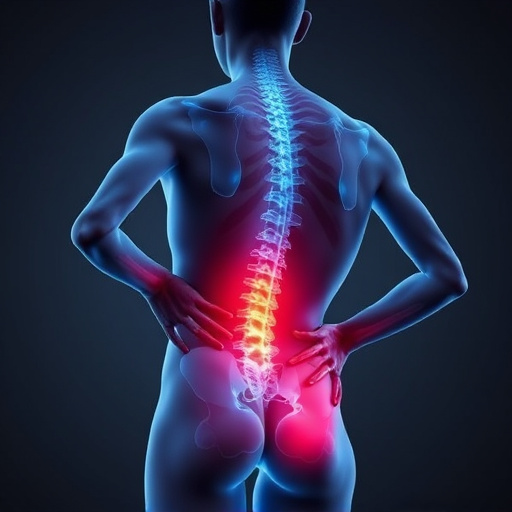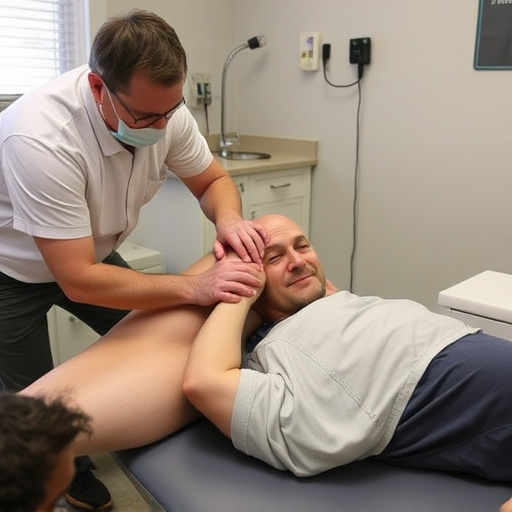Shockwave therapy provides non-invasive shockwave tendonitis relief for athletes and active individuals with overuse injuries or chronic tendon inflammation. After a thorough assessment, patients receive targeted low-energy shockwaves to stimulate tissue regeneration. Multiple sessions are required for optimal results, leading to improved mobility, flexibility, and pain reduction for lower back and other injured areas. Minor side effects are common but rare cases may experience increased pain; consulting with a healthcare provider is crucial before treatment.
“Discover the revolutionary power of shockwave therapy in alleviating tendonitis symptoms. This non-invasive treatment is gaining traction as an effective solution for chronic pain. In this comprehensive guide, we demystify the process and offer insights into what to expect during your initial sessions. From understanding the science behind shockwave therapy to exploring its potential benefits and side effects, this article equips you with knowledge to navigate your path to recovery. Uncover how this innovative approach could be the game-changer you’ve been seeking for lasting relief from tendonitis.”
- Understanding Shockwave Therapy for Tendonitis
- What to Expect During Your First Session
- Potential Benefits and Side Effects Explained
Understanding Shockwave Therapy for Tendonitis

Shockwave therapy for tendonitis is a non-invasive treatment that uses high-energy sound waves to stimulate healing in damaged tendons. Unlike traditional physical therapy or corticosteroid injections, shockwaves promote tissue regeneration directly by reaching deep into affected areas. This advanced approach offers significant potential for individuals seeking shockwave tendonitis relief. The procedure is often recommended for athletes and active individuals dealing with overuse injuries or chronic tendon inflammation.
By targeting specific points along the tendon, shockwave therapy can alleviate pain, reduce inflammation, and accelerate the body’s natural healing process. This innovative treatment has gained popularity not only in sports medicine but also within the personal injury chiropractic and spine care communities as a promising option for conditions like tendinopathy and even herniated disc treatment. Its non-surgical nature makes it an attractive solution for those seeking alternative approaches to managing joint pain relief.
What to Expect During Your First Session

During your first shockwave tendonitis relief session, you can expect a combination of assessment and targeted treatment. The therapist will begin by evaluating your condition, discussing your medical history, and understanding the severity of your tendonitis. This may involve some gentle manipulation and palpatory tests to pinpoint the affected areas. You’ll likely experience a series of low-energy shockwaves, which are safe and non-invasive, directed at the tender tendons and surrounding soft tissues. The procedure is generally painless, but some mild discomfort or sensitivity is normal.
After the initial assessment and treatment, you can anticipate clear instructions for home care. This might include rest, ice application, and specific exercises to strengthen the affected muscles and improve flexibility. Your therapist may also recommend lifestyle adjustments, such as modifying activities that aggravate the condition. With shockwave therapy, multiple sessions are often required for optimal results in managing pain from soft tissue injuries, including neck pain treatment when relevant. Each session builds upon the previous one, working to repair and regenerate tissues over time.
Potential Benefits and Side Effects Explained

Shockwave tendonitis relief sessions offer a promising approach for individuals suffering from this painful condition. One of the key potential benefits is reduced inflammation and faster healing of tendon injuries, which can significantly alleviate chronic pain management in the affected area, such as the lower back or other parts of the body undergoing injury rehabilitation. Many patients have reported improved mobility and flexibility after these sessions, making them a game-changer for those dealing with long-term discomfort.
However, like any treatment, shockwave therapy is not without side effects. Minor discomfort, redness, or swelling at the treatment site are common and usually subside within a few days. In rare cases, patients might experience temporary increased pain or sensitivity. It’s crucial to discuss these potential outcomes with your healthcare provider to ensure shockwave tendonitis relief sessions are the right choice for your specific needs, especially if you’re managing chronic conditions like lower back pain.
Shockwave tendonitis relief sessions offer a non-invasive, promising treatment option for those suffering from chronic tendon inflammation. By focusing on targeted energy delivery, these sessions can potentially reduce pain and improve mobility. During your initial session, you can expect a thorough assessment, followed by gentle shockwave therapy application. While generally well-tolerated, it’s important to be aware of possible side effects like temporary discomfort or slight bruising. With consistent treatment, many individuals experience significant relief from shockwave tendonitis relief, potentially restoring their active lifestyle.













